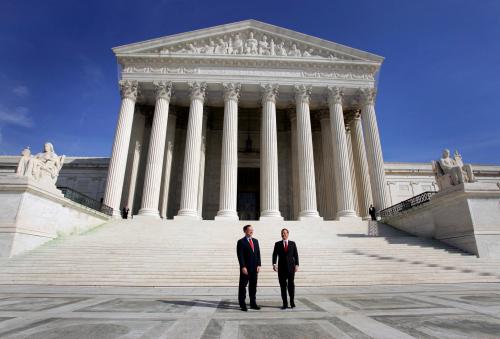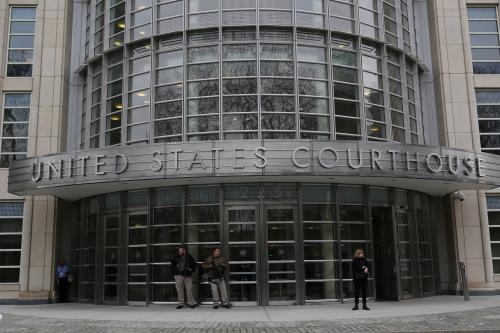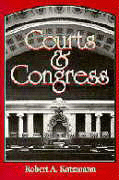The July 4th congressional recess’s pause in 2014’s record pace of judicial confirmations is a good time to explore the reason for the upsurge.
The 54 confirmations at 2014’s half-way point compare to 43 in all of 2013. What’s behind the increase? Some have said that the Senate’s November 2013 rules change—to allow a simple majority to end filibusters on most nominees—“has resulted in [the] sharp increase.” There is a lot of appeal (and even a little truth) to the claim, but beware the “post hoc ergo propter hoc” fallacy that if “B” follows “A”, “A” necessarily caused “B”.
There have been 61 confirmations since November 21. The rules change clearly enabled three of them. Late October and mid-November filibusters of three D.C. circuit appellate nominees were the immediate cause of the change, which in turn allowed their post-November confirmations.
Saying how many of the other post-November confirmations would have failed without the rules change is an exercise in informed speculation. Here’s one way to look at it: how many of those confirmations had enough negative votes to have sustained a filibuster under the old rule?
Invoking cloture—i.e., cutting off debate—under the old rule required 60 votes. Filibuster proponents were often able to prevent that by peeling off, if not 41 Nay votes, at least votes in the 30s, assuming not all 100 senators were present to vote. For this analysis, let’s set the bar at 34—the fewest number of votes that prevented a 60 vote cloture-invocation against any Obama nominee (most filibuster-sustaining votes were in the high 30’s and low 40’s).
Forty five of the 51 post-November district confirmations quite probably would have happened without the rules change. They had fewer than 34 Nays. And it’s hardly automatic that the six with at least 34 Nays would have been filibustered under the old rule. Senators can and do oppose a nominee but oppose filibustering her as well. Prior to the rules change, 12 district judges were confirmed even though they had at least 34 Nays. Only one of those needed a cloture vote to move to confirmation—33 voted against cloture and 44 voted against confirmation. (Cloture votes, a rarity before the rules change, have been routine since then, and they generally get around 30-40 negative notes. But these appear to be protest votes against the rules change, inasmuch as 27 of the 51 district confirmation had no Nays and another 14 had 20 or fewer Nays.)
So it’s reasonable speculation, but still speculation, that the rules change had no direct effect on district confirmations.
Circuit confirmations are a different story. The three D.C. nominees clearly owe their confirmations to the rules change. Three of the seven other circuit confirmations since November had well over 34 Nays (40, 43, and 45, in fact). One nominee had represented challengers to California’s since-overturned same-sex marriage ban; another, also a Californian, was nominated to a long-vacant seat that Republican senators claimed belonged in Idaho. The third, with 45 Nays, had authored Justice Department memos providing legal justifications for drone strikes against U.S. citizens. Successful filibusters against all three, under the old rule, seem quite plausible. (The other four post-rules-change nominees were confirmed with either no, or in one case, three negative votes.)
Bottom line: The rules change likely enabled at most twelve of the 61 post-rules change confirmations, and it more likely enabled only six.
The frenetic pace of 2014 confirmations is due mainly to Senate Democrats’ desire to secure as many as they can before the November elections and the possibility of losing control of the confirmation process.










Commentary
How Many Judicial Confirmations Are Due to the Filibuster Rules Change?
July 2, 2014